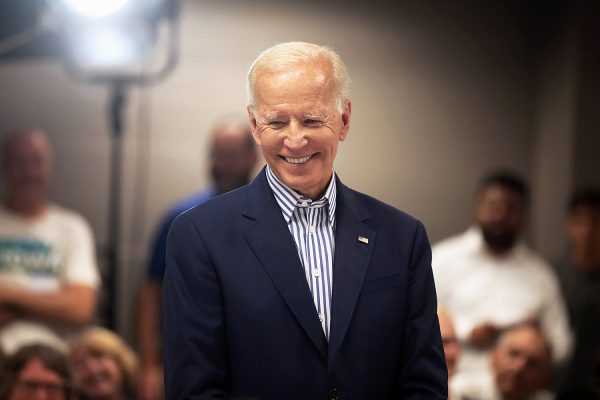
In the six states that could decide the outcome of the 2020 election in America, Joe Biden outpolls his Democratic rivals, in particular among minority voters and white voters with a college degree.
The New York Times reports that middle-income voters in Arizona, Florida, Michigan, North Carolina, Pennsylvania and Wisconsin prefer the relatively centrist former vice president over the more left-wing Senators Bernie Sanders and Elizabeth Warren.
The head-to-head figures against Donald Trump are mostly within the margin of error and probably not predictive a year out from the election.
But they do give Democratic primary voters vital information as they make up their minds about whom to nominate.
Vital center
Biden is clearly the favorite of black, Hispanic and college-educated white voters in the six states.
White voters without a college education, by contrast, stick with Trump no matter his opponent.
The last group has received a lot of attention — and blue-collar defections in the industrial Midwest arguably did cost Democrats the 2016 election.
But Hillary Clinton won the popular vote in part because a significant number of white and university-educated Americans, in the cities and the suburbs, switched from Republican to Democrat.
These Romney-to-Clinton voters had their revenge in last year’s midterm elections, when Democrats wisely ran pragmatic, center-left candidates in their districts.
They did again in off-year elections on Tuesday, when they gave Democrats control of the suburbs around Philadelphia, both chambers of the Virginia General Assembly for the first time since 1993 and the Kentucky governorship. (Trump won Kentucky by 30 points in 2016.)
Yet these voters are being ignored by most of the party’s presidential candidates.
Who are these voters?
The New York Times writes:
They oppose single-payer health care or free college, and they support the Republicans’ 2017 tax law. They are not natural Democratic voters: 41 percent consider themselves conservative; 20 percent say they’re Republican; 33 percent supported [Donald] Trump or [libertarian Gary] Johnson in 2016.
So it’s hardly surprising they would have reservations about Sanders and Warren, who want to nationalize health insurance, make college debt- or even tuition-free and raise taxes to pay for it.
Left-wing arguments
Sanders’ and Warren’s supporters would argue that their “bold” progressive vision will:
- Raise turnout among marginalized groups; and
- Convince Obama-to-Trump voters to come back to the Democratic Party.
There is no evidence to support the first argument. Even if Democrats did convince more young, nonwhite and low-income voters to go the polls, Republicans aren’t going to sit still. Nate Cohn has argued that such hypothetical Democratic gains would almost certainly be offset by higher turnout among Trump supporters. As Amy Walter warned in 2016, when Ted Cruz suggested he could win a national election on the back of higher evangelical turnout: for every action there is an equal and opposite reaction in politics.
The second argument has more merit. Trump is clearly breaking his promises to farmers and blue-collar voters. Republican health reforms aren’t “taking care of everybody”. Trump’s policy for the opioid epidemic is a disaster. His trade war has thrown farmers into a crisis. The administration has already spent $28 billion on farm bailouts, twice the amount that was needed to save the car industry in 2009.
Some disillusioned Trump voters will be persuadable in 2020. But most don’t care about the damage he is doing to the economy. Or to America’s standing in the world, for that matter. Trump’s white base is afraid of losing cultural and political power, and they know Democrats are not on their side.
Democrats are for empowering women, for transgender rights, for immigration, for Black Lives Matter and against laws that make it harder to vote. A serious proposal to woo whites who feel left behind would entail deemphasizing such causes, but that is not what the Sanders- and Warren-supporting woke left calls for. Nor would it be credible.
Lukewarm center-right
The more prudent strategy is appealing to suburbanites who may or may not have voted for Trump in 2016, but who are ready to vote him out.
Such voters tend to be lukewarm about diversity and multilateralism, but they aren’t afraid of either. They have become more relaxed about changing social norms, such as gay rights, and if anything Trump’s bull-in-a-china-shop government has made them value immigration and international cooperation more.
They have also shown a willingness to put principle before party. As recently as 2012, Mitt Romney won white college graduates by 14 points. The 2016 election saw a 31-point swing to Democrats.
Add to that the fact that the share of college graduates is rising, and the white working class is in decline, and it’s clear where Democrats should look for voters.
If they want to win.
